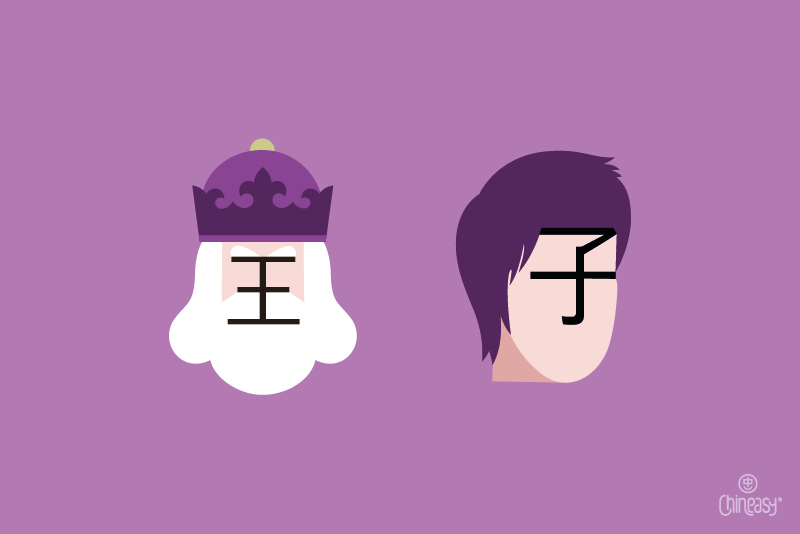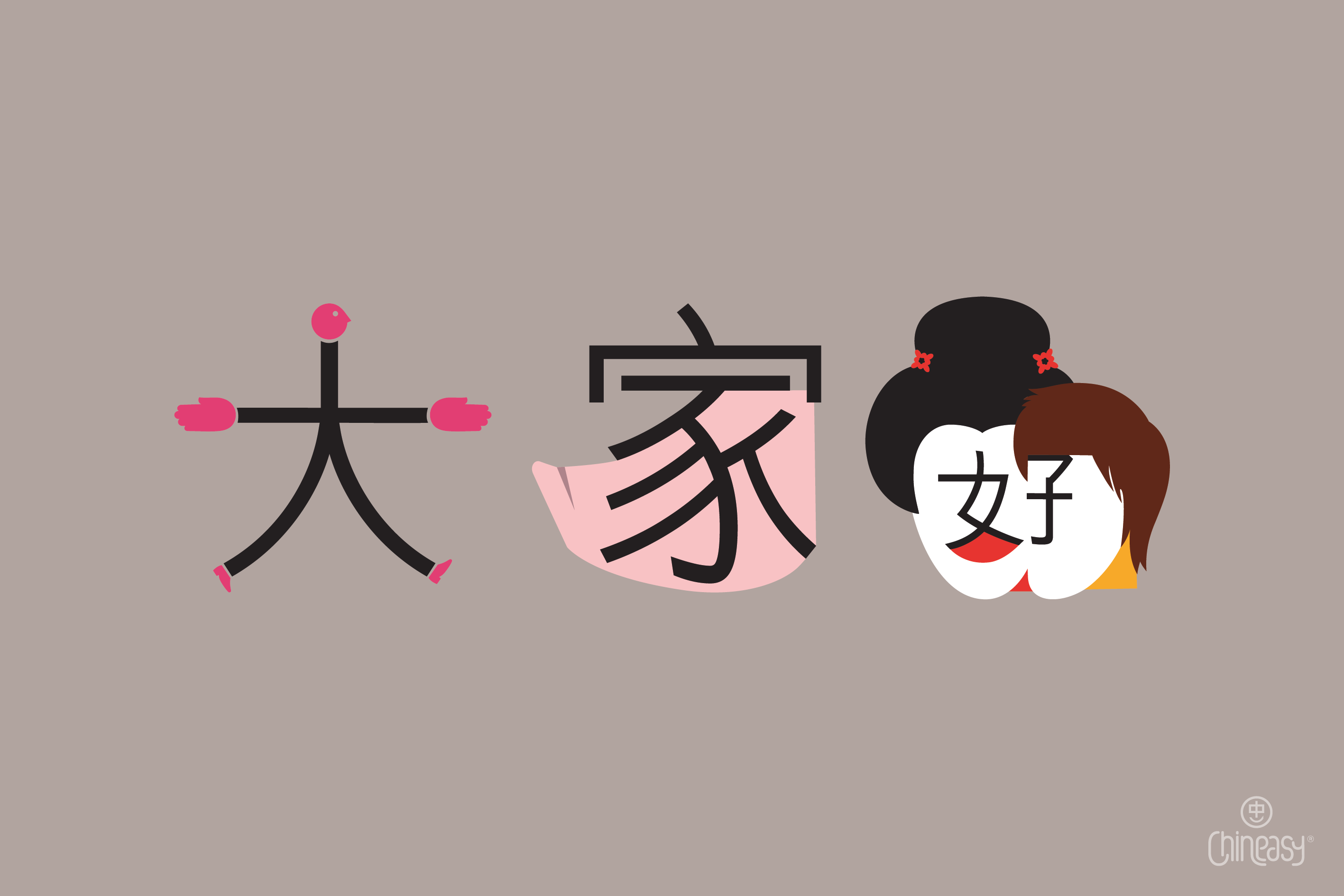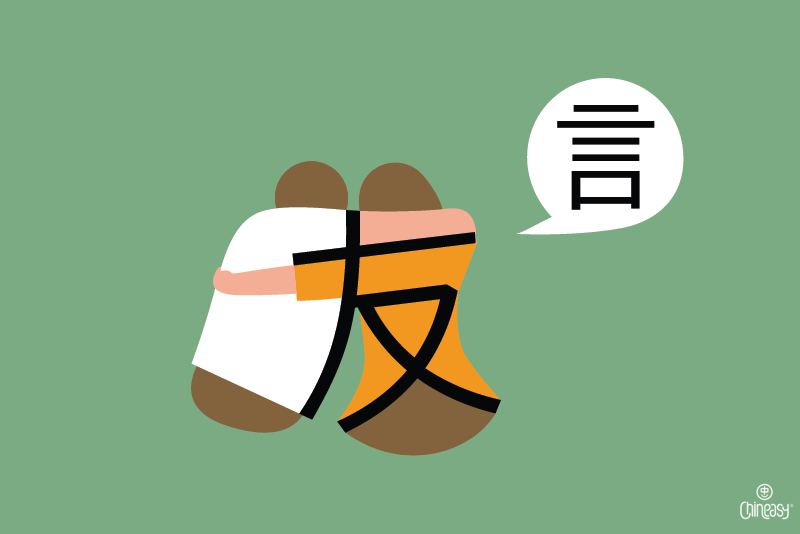Are you a dessert or a starter person? Do you have a sweet tooth? If your day isn’t complete without a bite of something sweet, you’re in for a treat!
From the crispy crunch of cookies to the soft, heavenly bite of a mousse, we’re unveiling 10 essential Chinese words for every dessert lover, complete with pictures and Chinese pronunciation to make learning as enjoyable as indulging.
Let’s embark on this sweet linguistic journey together, one delicious word at a time!
Cookie 餅乾/饼干
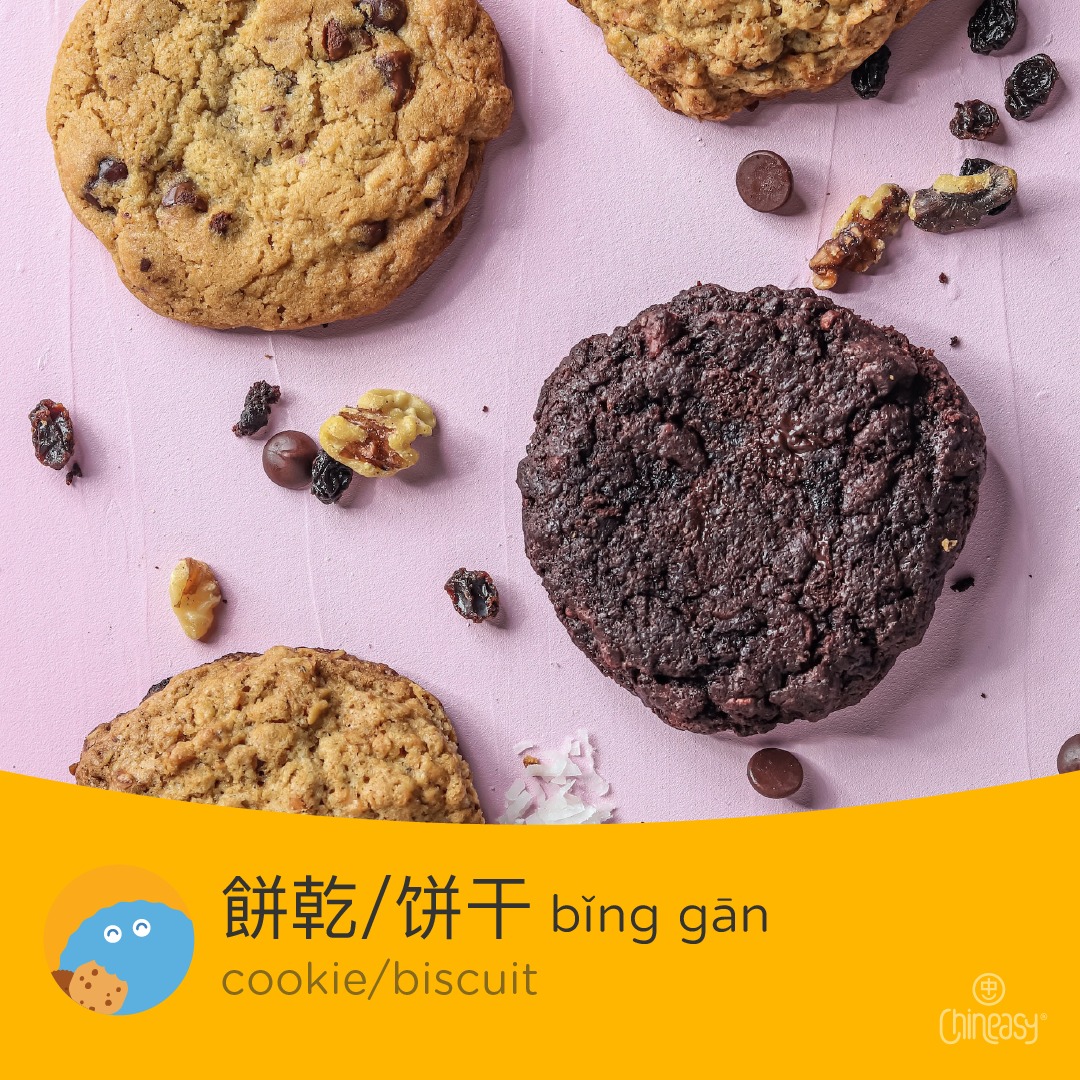
Ever wondered if there’s a difference between cookies and biscuits? In America, people usually say “cookie,” while in the UK, they prefer “biscuit.”
Here’s a sweet insight: cookies are usually soft and chewy, like the ones you get at Subway restaurant. But in the UK, biscuits are more about the crunch.
The good news is, in Chinese, both cookies and biscuits are called by the same delicious name: 餅乾/饼干 (bǐng gān). 餅乾 is how you write it in traditional Chinese, and 饼干 is in simplified Chinese.
Let’s break it down: 餅/饼 (bǐng) means “cookie” or any round, flat baked snack. And 乾/干 (gān) means “dry.” So, put together, 餅乾/饼干 is the word for a dry, flat baked snack.
It’s a perfect name because it describes exactly what cookies and biscuits are!
Candy 糖果
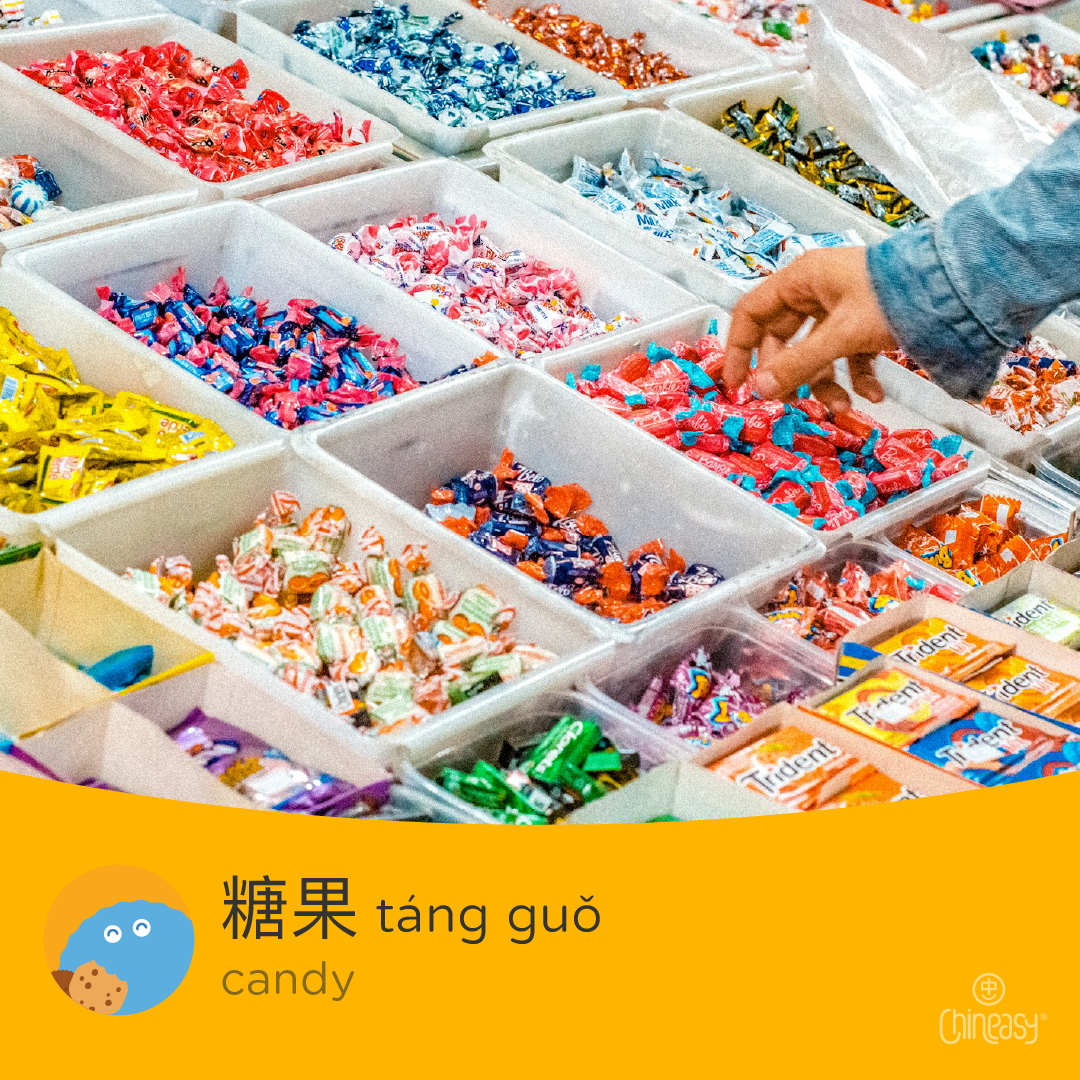
Do you lean towards cookies (餅乾/饼干) or candies for a snack? Cookies might fill you up more, but candies are a quick way to brighten your day.
In Chinese, the word for “candy” is 糖果 (táng guǒ). 糖 (táng) means “sugar” or directly “candy,” while 果 (guǒ) translates to ‘nut’ in this context.
You might wonder, why “sugar nut”? Back in ancient China, the first sweets were actually nuts coated in honey. Since sugar as we know it was a later invention, early Chinese confectioners used honey or malt sugar to sweeten nuts or fruits, crafting the earliest candies.
Today, 糖果 refers to a narrower range of sweets, primarily focusing on those that are sugar-based and often hard or chewy in texture, such as jelly beans, lollipops, and toffees.
One famous Chinese candy is the “white rabbit candy,” aka 大白兔 (dà bái tù), which literally means “big white rabbit.” It’s chewy, shaped like a tootsie roll, and comes in 15 flavors.
The most liked flavor is sweet and milky. You might find it easily in a Chinese grocery store near you.
Chocolate 巧克力
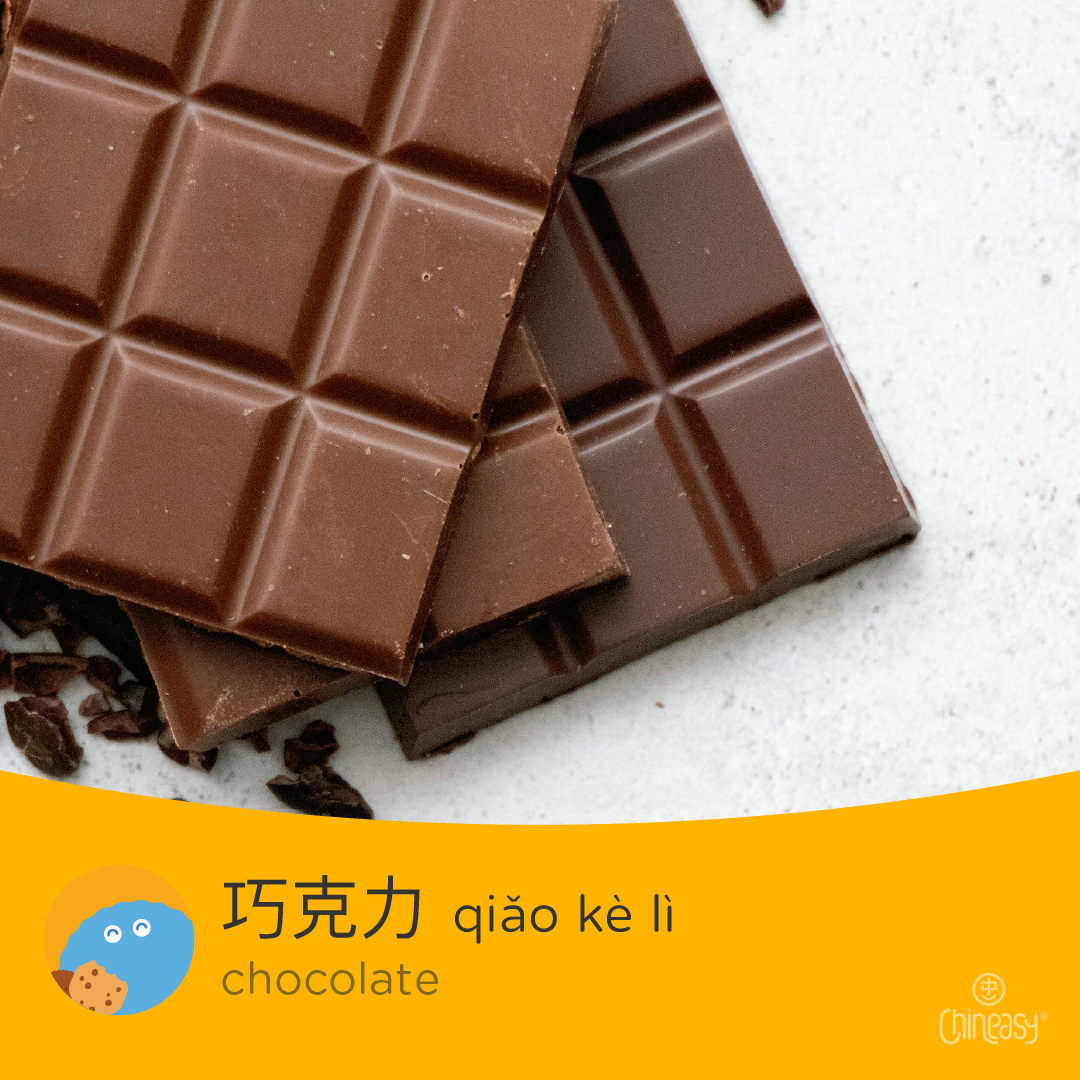
Did you know that some Chinese words come from other languages? 巧克力 (qiǎo kè lì), meaning “chocolate,” is one of them. These borrowed words are known as “loanwords.”
巧克力 sounds a bit like the French word “chocolat,” as it’s without the “t” sound at the end.
Some people might consider chocolates as a type of candy. But in Chinese, chocolate and candy are seen as completely different treats.
Yet, both treats have one thing in common: they’re mood boosters!
Chocolate, in particular, is known for releasing endorphins, which are chemicals that bring us joy, into the brain.
So, whether it’s a bar of chocolate or a few candies, each has its own way of lifting people’s moods.
Cake 蛋糕

Are you craving a slice of cake now? In Chinese, “cake” is called 蛋糕 (dàn gāo).
蛋 means “egg,” and 糕 means “cake,” so together, they mean “egg cake.” This fits well because eggs are essential for making cakes, especially those light, fluffy ones.
In many places, people buy birthday cakes (生日蛋糕; shēngrì dàngāo) from supermarkets.
However, in China, it’s more common to get them from local bakeries or patisseries. That’s because they’re usually fresher and tastier.
Donut 甜甜圈
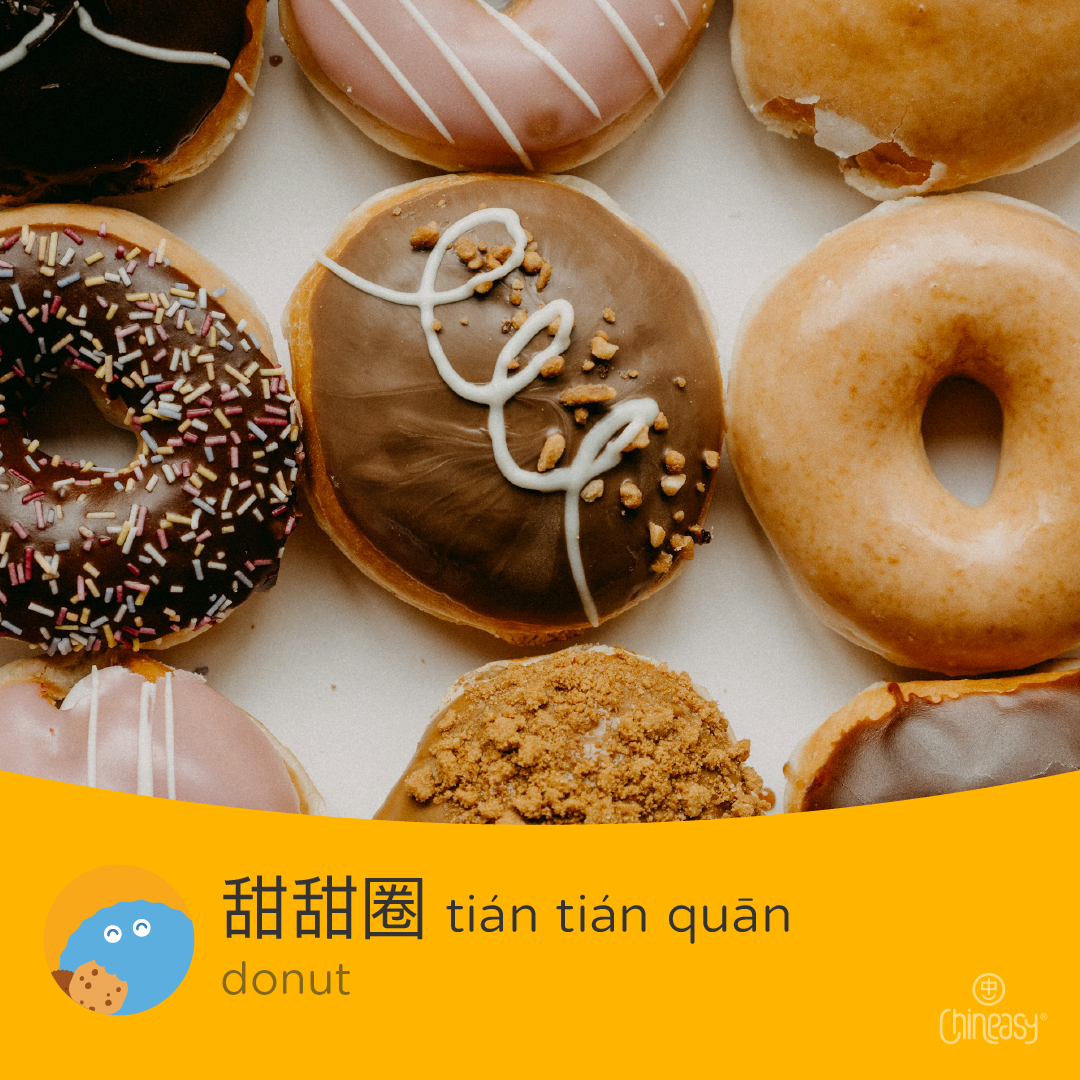
If now you’re in the mood for something sweet but with a fluffy texture, then donuts are the perfect treat for that craving.
In Chinese, “donut” is called 甜甜圈 (tián tián quān). The word 甜 means “sweet,” and 圈 means “ring” or “circle,” so together, 甜甜圈 literally means “sweet sweet ring.”
This name perfectly captures the essence of what a donut is: a sweet, circular treat that’s irresistible to many.
Donuts come in various flavors and toppings, from simple sugar dustings to elaborate fillings and icings.
Whether you’re enjoying a classic glazed donut or experimenting with more unique flavors, the 甜甜圈 will satisfy your sweet tooth with its delightful combination of sweetness and fluffy texture.
Muffin 馬芬蛋糕/马芬蛋糕
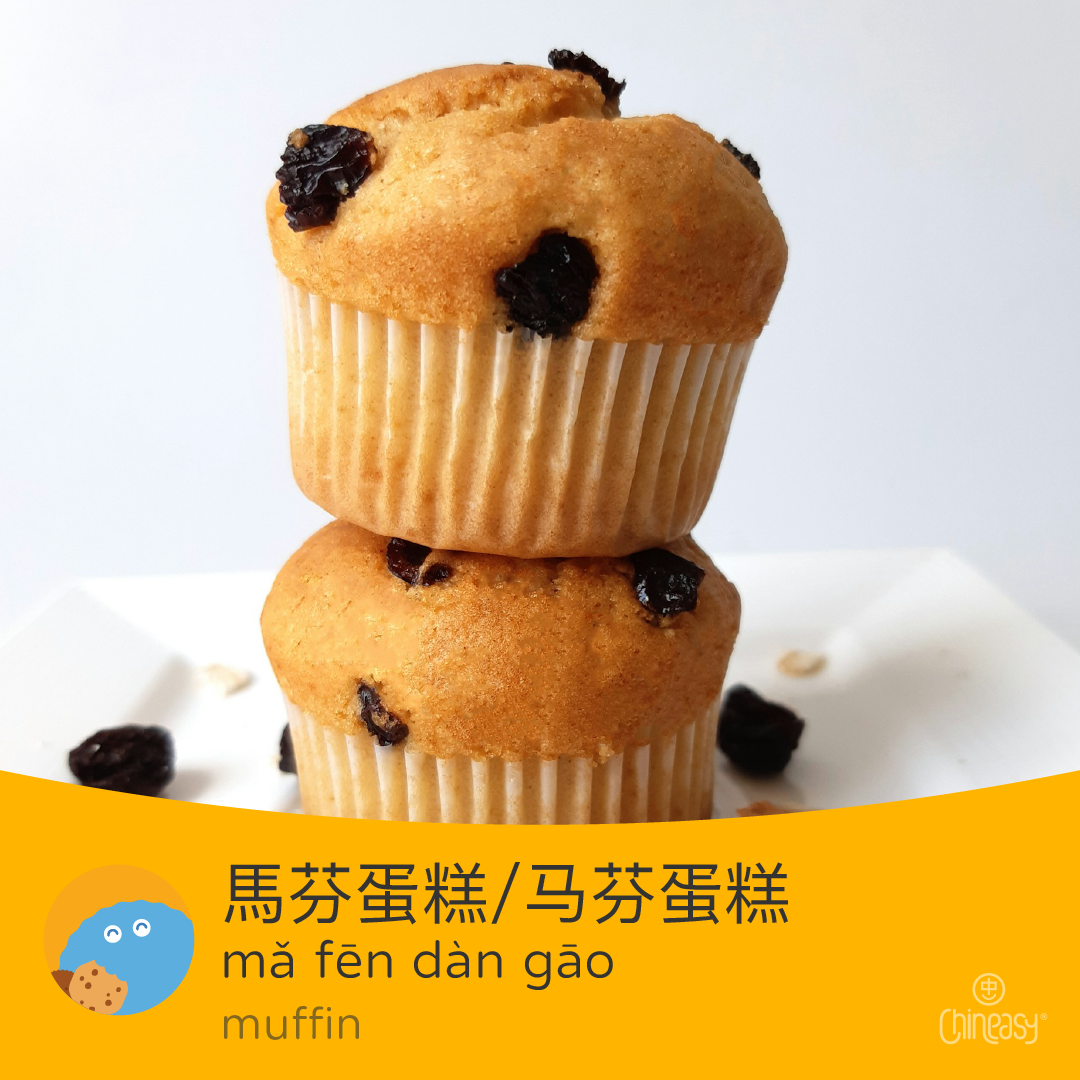
Muffin, or 馬芬蛋糕/马芬蛋糕 (mǎ fēn dàn gāo) in Chinese, is another example of loanwords.
馬芬/马芬 borrows from the English word “muffin.” And we’ve learned 蛋糕, meaning “cake.” So together, 馬芬蛋糕/马芬蛋糕 literally means “muffin cake,” emphasizing its cake-like characteristics in Chinese context.
Muffins, with their versatile nature, can be crafted to be as healthy or indulgent as desired. From high-fiber oat muffins to ones sweetened with natural ingredients like bananas, carrots, and berries, the possibilities are endless.
Brownie 布朗尼
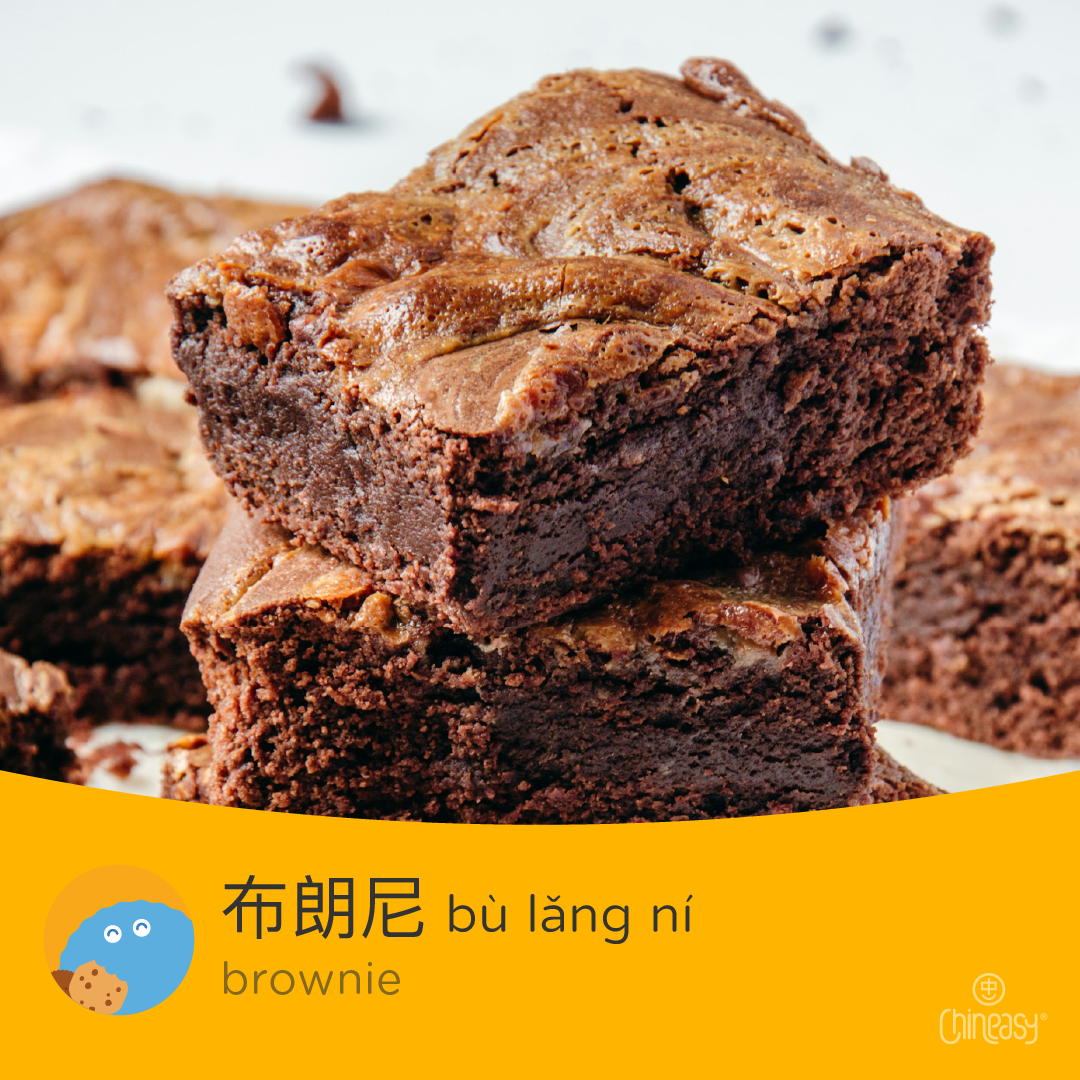
What dessert can be cakey, gooey, or even a bit of both? The brownie, or 布朗尼 (bù lǎng ní) in Chinese, fits the bill perfectly.
布朗尼 (bù lǎng ní) is a loanword borrowed from its English counterpart, “brownie.”
To expand your vocabulary, you can combine the learned word 巧克力 (chocolate) with 布朗尼 (brownie) to create the term 巧克力布朗尼 (qiǎokèlì bùlǎngní), which translates directly to “chocolate brownie.”
Brownies come in various styles—from fudgy to cake-like, with some even featuring layers of frosting, nuts, or chocolate chips. Their versatility makes them a beloved choice for dessert lovers looking for that perfect balance of chocolatey goodness.
Whether you prefer them warm with a scoop of ice cream or enjoy them as a chewy snack, brownies offer a delightful taste experience.
Mousse 慕斯
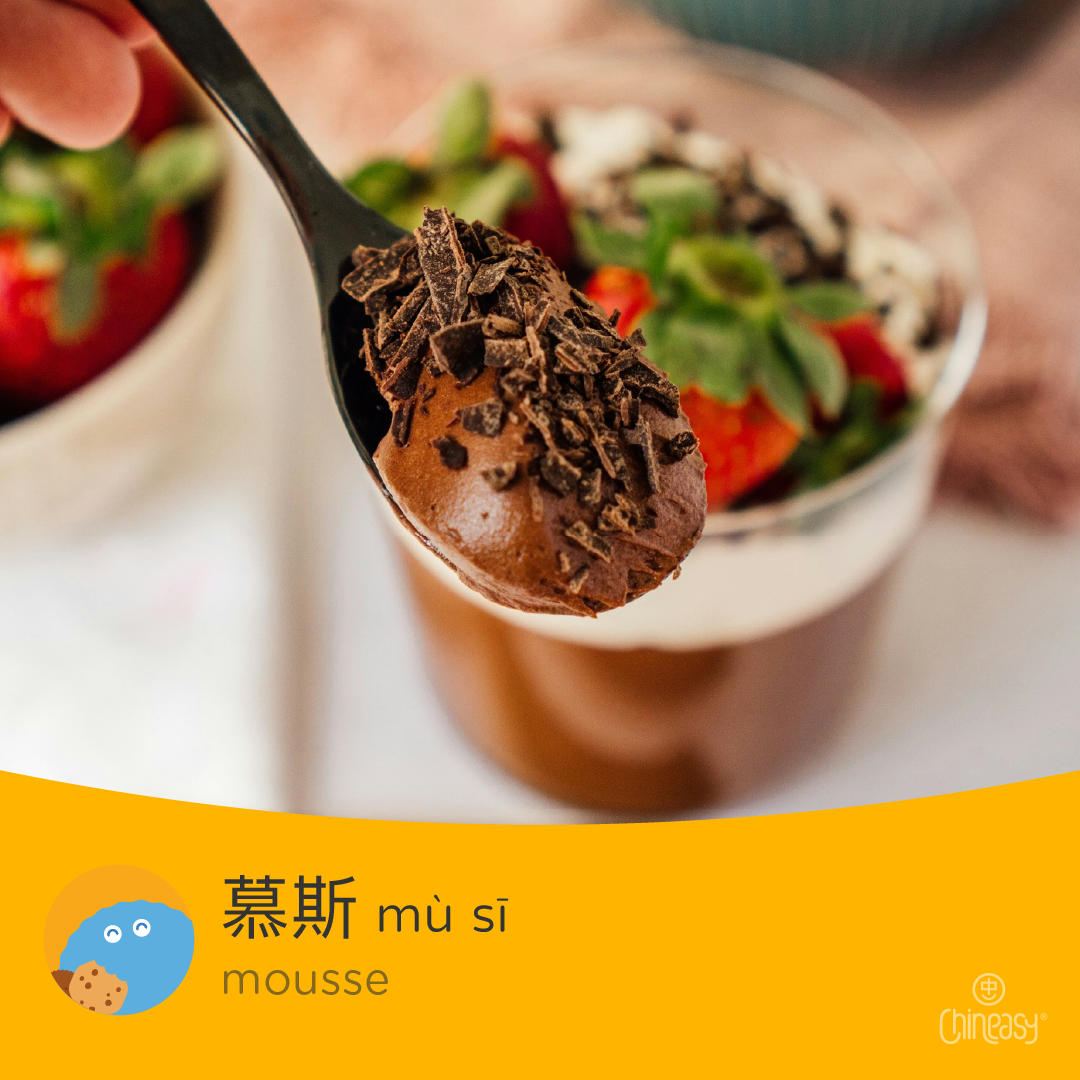
If you like making desserts that require no baking and only a few ingredients, then mousse is your ideal choice.
Similar to 布朗尼 (brownie), 慕斯 (mù sī), the Chinese term for “mousse,” is also a loanword.
The dessert mousse has a cloud-like texture that seems to melt away in the mouth.
Whether you prefer your mousse airy and fluffy or creamy and dense, this dessert showcases how simple ingredients can create something truly sophisticated and indulgent.
Macaron 馬卡龍/马卡龙
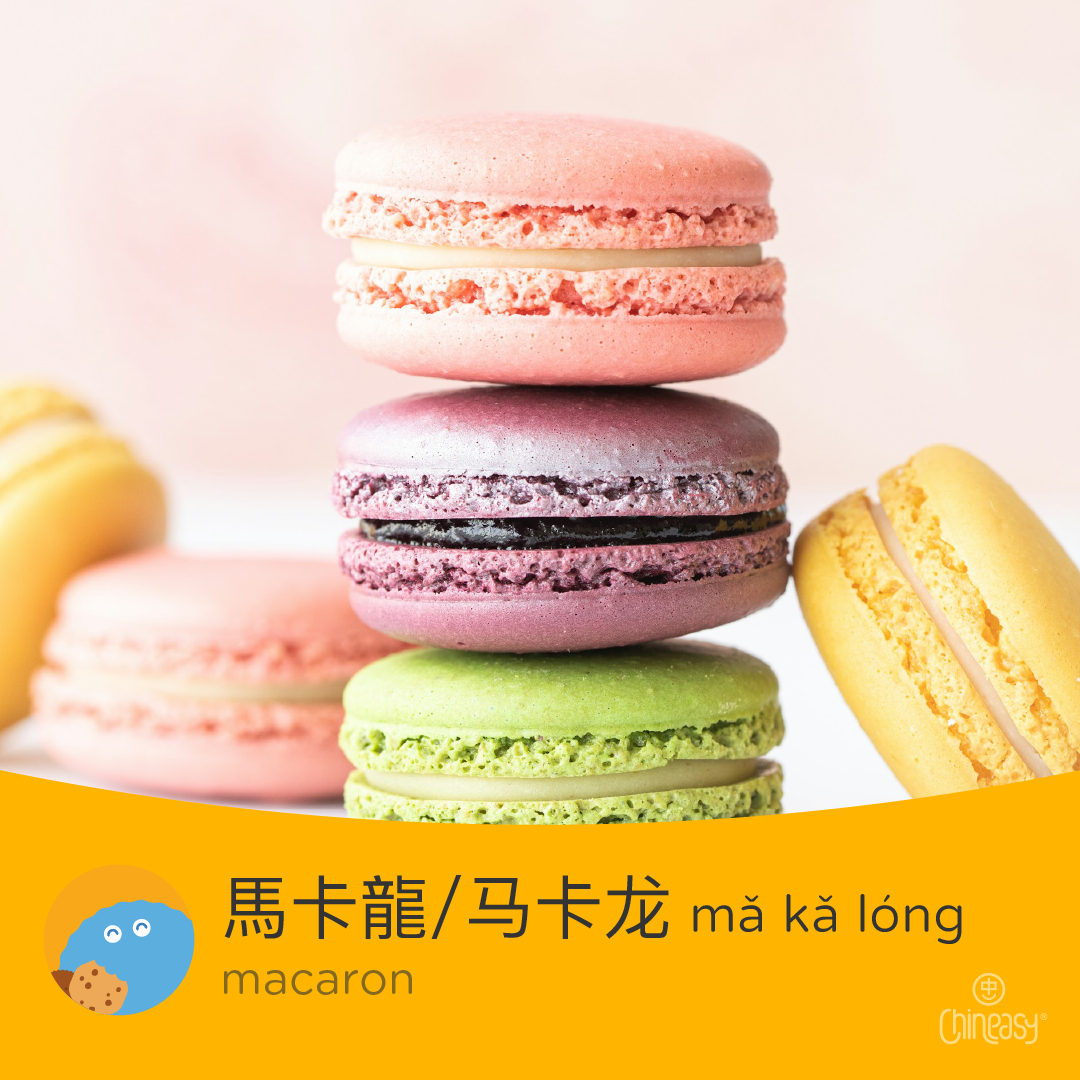
The macaron immediately comes to mind when you think of a quintessentially French petite dessert.
In Chinese, this delicate treat is known as 馬卡龍/马卡龙 (mǎ kǎ lóng). Interestingly, while 馬卡龍/马卡龙 is indeed a loanword, its pronunciation leans closer to the English pronunciation of “macaron” rather than the French.
Macarons are celebrated for their vibrant colors, intricate flavors, and the perfect balance of crunchy and chewy textures. Each bite is a blend of a smooth, creamy filling sandwiched between two light, meringue-based shells.
This exquisite dessert has seen a surge in popularity across China and is often regarded as a luxury treat with a premium price.
Scone 司康餅/司康饼
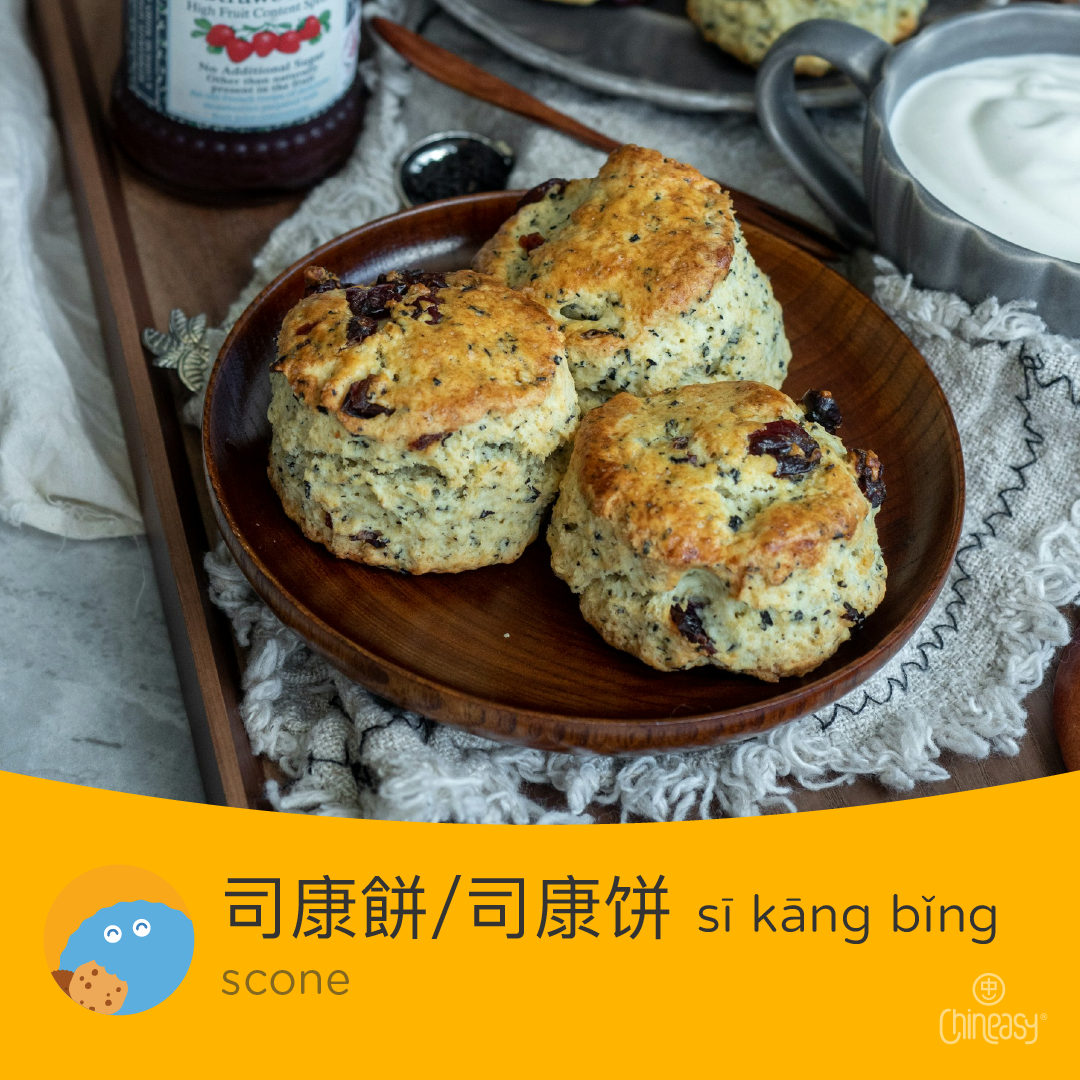
Wrapping up our sweet journey, we spotlight the “scone,” a beloved British treat and a quintessential part of the UK’s afternoon tea tradition.
In Chinese, the scone is translated to 司康餅/司康饼 (sī kāng bǐng). The term 司康 (sī kāng) directly borrows from the English “scone.”
The addition of 餅/饼 (bǐng), as previously seen in 餅乾/饼干 (cookie/biscuit), suggests that in the Chinese perspective, scones are akin to biscuits rather than cakes.
This delightful treat, neither fully a cake nor a biscuit, stands out for its distinctive texture and versatility, making it a cherished addition to any tea table.
Here we go – 10 key Chinese words for dessert fans. Interesting fact: 6 of these terms are loanwords, adopting their pronunciation from other languages, which makes them an excellent starting point for learners.
This mix shows how desserts from around the world have found a place in the Chinese language and culture. So, whether you love learning new words or just love sweets, these terms are perfect for exploring both.
